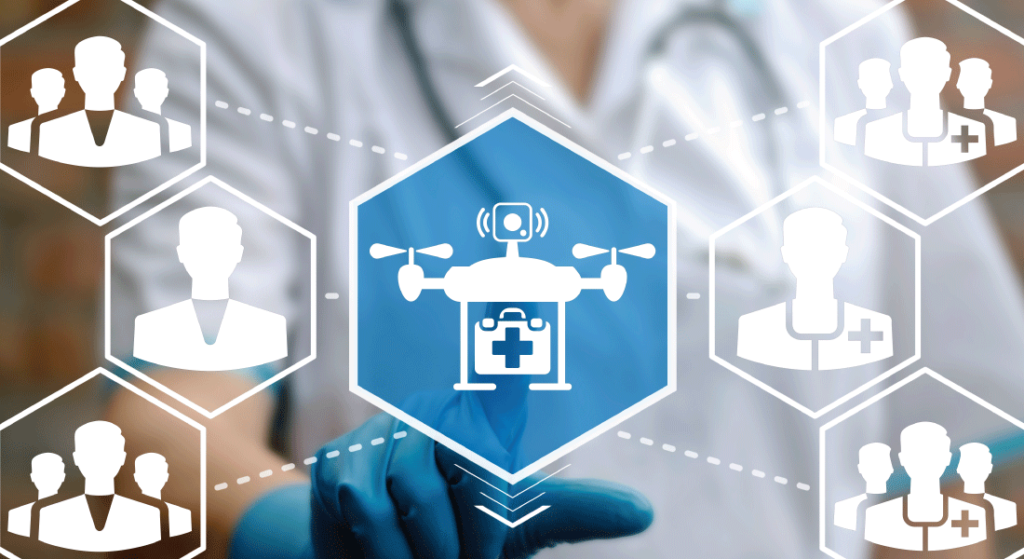Drones Show Potential for Delivering Telemedicine, mHealth Services

Drones are being used to ferry mHealth supplies and telemedicine services (as well as beer and pizza) in other parts of the globe. Now federal officials are taking notice of their mobile health value.
A recent article in mHealthIntelligence discusses how high-tech toys could soon become a valuable telemedicine tool.
Drones – those tiny, unmanned planes that have been buzzing over beaches and playgrounds across the US – are beginning to show up on the radar in healthcare circles, thanks to a handful of successful programs in other parts of the globe. Some see them as the ideal means of transport for emergency telemedicine services, able to drop in on an accident, disaster site or remote location with supplies, digital health tools and a telehealth link to the outside world.
Because Federal Aviation Authority regulations prohibit GPS-enabled drones from flying out of sight of the operator, their use in the US is limited. But experts say the FAA has made exceptions for healthcare uses and could develop a new policy for medical drones as early as next year.
What drones are and what they can do
Unlike big, multimillion-dollar military drones, the small, rotary-wing aircraft used commercially cost around $10,000 and carry a 5-pound payload for 30 to 60 minutes of flight time, with a range of about 20 to 60 miles. They can be manually operated or preprogrammed to fly specific routes, need almost no room to land, and can even drop packages from a low hover.
The first medical application of UAVs is likely to be disaster relief, where the logistics of distributing blood products is often a bigger problem than supply. The ability of UAVs to travel over closed roads and rugged terrain without risk to a flight crew seems to make them ideal for use in disaster areas.
Close to a dozen medical drones have been created and tested in the US with the goal of going airborne once the rules are changed. They include the HiRO (Health Integrated Rescue Operations), developed by students at Hinds Community College and the William Care University College of Osteopathic Medicine, both in Mississippi. Dr. Italo Subbarao, a senior associate dean at the college, came up with the idea after witnessing the devastation caused by a 2013 tornado in Hattiesburg, Miss.
Equipped with medical kit capable of treating as many as 100 patients, an audio-visual connection and a pair of smartglasses, it’s designed to connect bystanders and first responders with a remote doctor – wearing a Microsoft HoloLens headset and holographic health record display – who can provide remote care until rescue teams arrive.
Drones to the rescue
The article goes on to explain that drones demonstrated their capabilities in healthcare in two separate events in 2015. That summer, the Health Wagon, a mobile health program serving remote communities in southwest Virginia, partnered with the international non-profit Remote Area Medical, NASA and an Australian drone delivery service called Flirtey to use drones to ferry medications from an airport one mile away to the Wise County Fairgrounds, where the Health Wagon was holding its annual three-day RAM clinic for thousands of local residents.
“The use of drones for medication delivery provides a great opportunity to address the medical needs of underserved communities”
Also, that year, the Johns Hopkins University School of Medicine and non-profit Field Innovation Team (FIT) teamed with Flirtey in a demonstration, flying drones with medical supplies from a ship off the New Jersey coast to a medical camp at Cape May and back again.
It’s hard to say what the future holds, as policies and technologies continue to change. But it seems that drones can play an important role in improving healthcare delivery in rural areas.

